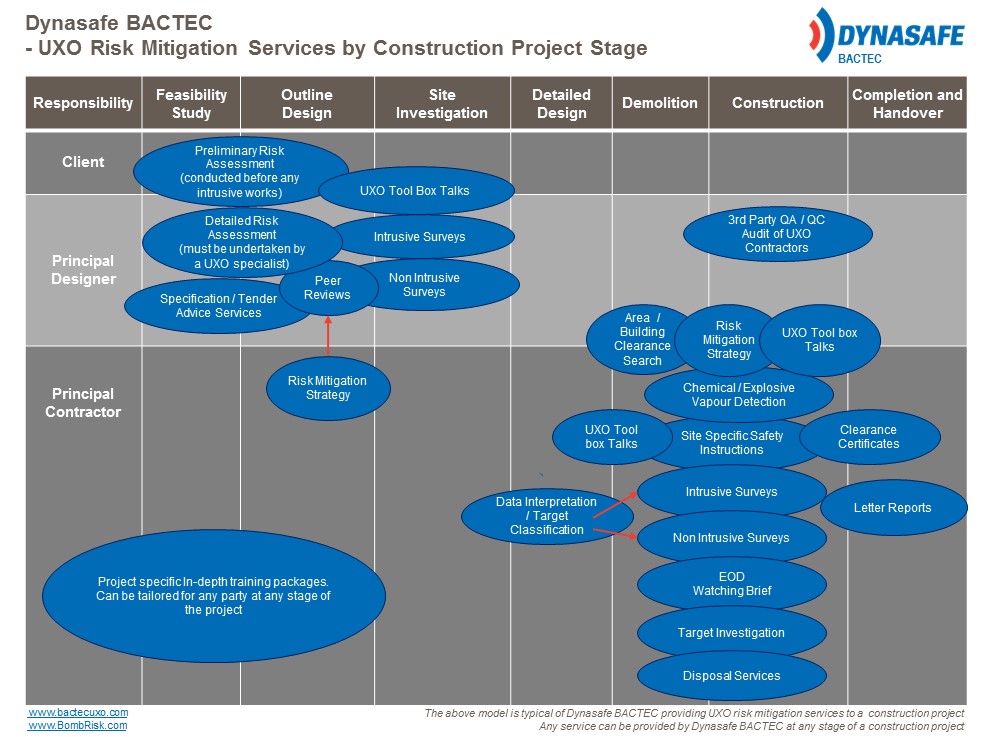Despite more than seventy years passing since the UK was a target for mass bombing raids, not a month seems to go by without another story of UXO being discovered .
‘Undetonated bombs from World War Two found on building site in Sheffield city centre’,
28 September 2016, The Star
‘163rd Boat Race Gets Green Light After ‘WWII Shell’ Removed near Putney Start’,
1 April 2017, West London Today
‘More grenades found during road works in Plymouth’
12 January 2017, BBC News
‘Children played with unexploded bomb at Rosemarkie’
23 February 2017, BBC News
‘WW2 bomb found on Brondesbury Park building site’
2 March 2017, BBC News
Most often these stories relate to construction works and as such CIRIA in 2009 published the first UK guidance document on managing UXO during the construction process with particularly emphasis on the site investigation and groundwork phases of construction. In the intervening years CIRIA C681 ‘Unexploded ordnance (UXO), A guide for the construction industry’ has become the de facto UK standard for the investigation and mitigation of UXO in land construction projects, often quoted in specialists’ literature as the standard to which they would carry out such works. Generally this has helped to move away from risk mitigation being routinely carried out where there was little justification for the recommended works, although if the article published in 2015 by Zetica on their website “UXO Risk Assessment – Where are we 6 years on from the Publication of CIRIA’s UXO Guidance” is anything to go by not all of those offering UXO specialist services are meeting good practice.
Whilst C681 has done much to raise the benchmark for good practice, it does not consider the risk of UXO through the whole of the construction cycle, and at over 140pages long is a detailed read that most, who are on the front line of discovering UXO, are unlikely to see, let alone read. For example, the document does n’t highlight the risk of encountering UXOs during demolition something which is more common than you may think, and if it was on-site prior to demolition should UXO be considered a risk on some sites from a facilities managment point of view? Or not? Should UXO be considered at the pre-aquisition stage? Certainly on some sites the UXO mitigation may make the site unviable but on others UXO would not need to be considered further. As with all risks in the ground knowing when, how much and at what stages specialist input is required is essential for a cost effective outcome. CIRIA are now looking to add some companion documents to C681 with a proposal for a more concise guide for UXO through the construction cycle and toolbox talks. If you have experience of UXO in land projects throughout the construction lifecycle and wish to be involved then please contact the CIRIA’s Project Manger, Joanne Kwan.


